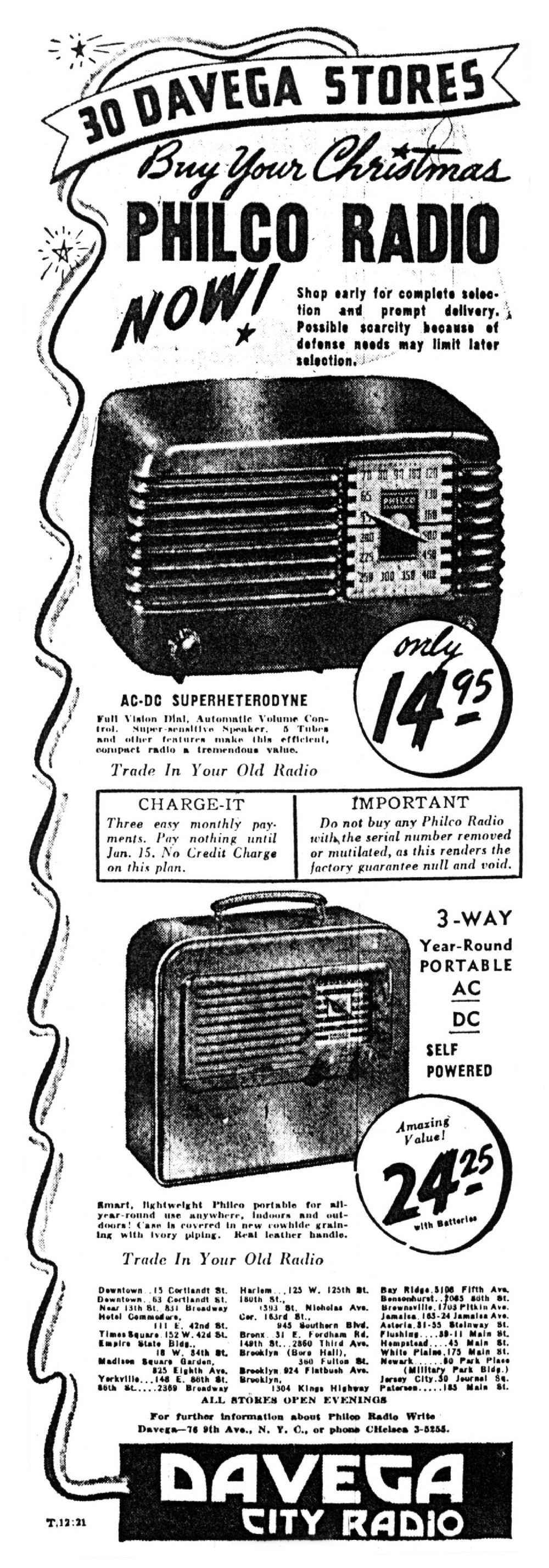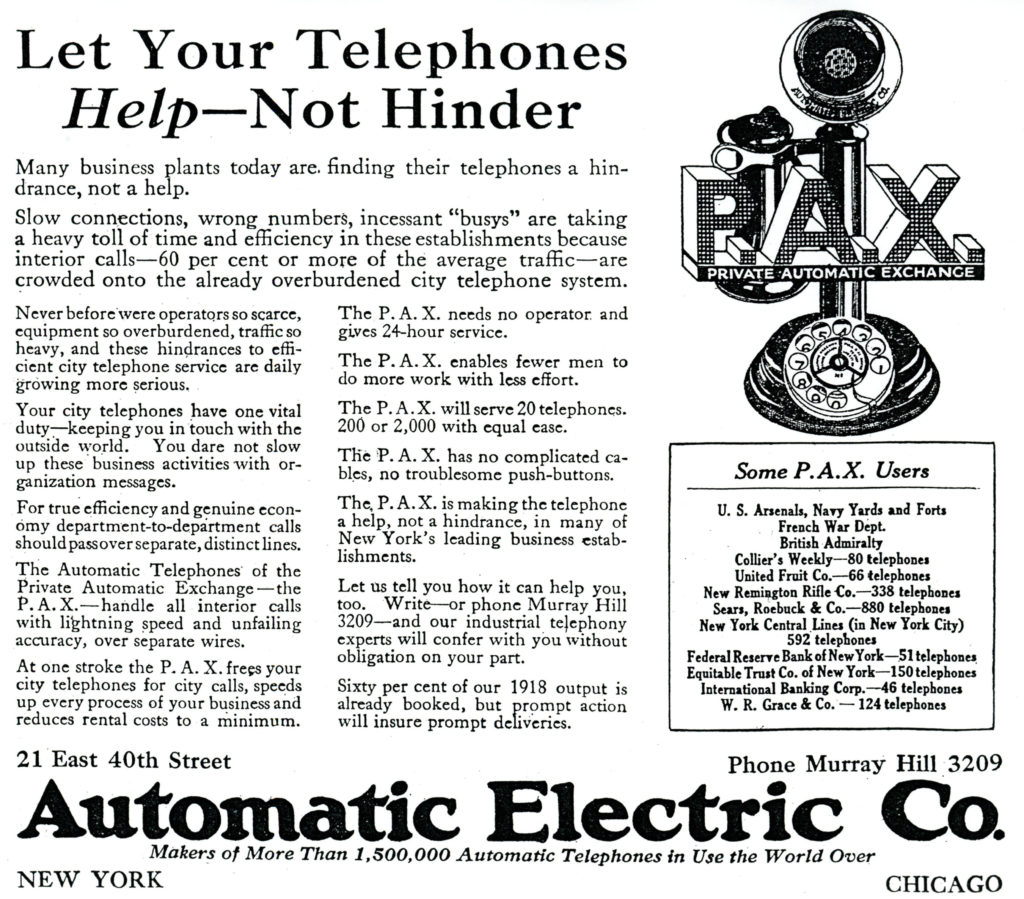Technology changes, as does the world of business.
Some corporations are acquired by other enterprises. Some merge with competitors. Some, quickly or gradually, falter, and go out of business.
Neither the manufacturer – Philco Radio – nor the merchant – Davega Stores – from this New York Times advertisement of December 21, 1941 (published two weeks after the Japanese attack on Pearl Harbor) still exist.
But, it’s still s a most interesting advertisement.
Notably, in the way that Philco’s advertising staff correctly anticipated that defense needs would limit the availability and selection of radios for the civilian market for the indeterminate future.
Notably, in the way that prospective customers are advised to trade in their old radios, without specifying what, exactly, they’ll receive in exchange!
Notably, in the way that a selling point of the “AC-DC Superheterodyne Radio” is the presence of 5 tubes. (During the 1960s, hand-held, portable AM receivers which included transistors as components were dubbed “transistors”! A selling point!)
As for Philco, the company was founded in 1892 as the Helois Electric Company, with the name “Philco” appearing in 1919. The company existed as such until 1961, when it was acquired by the Ford Motor Company.
Davega stores were a New York metropolitan area chain that sold consumer durables, appliances, sporting goods, and apparel. The company was founded in 1879, expanded to 27 stores by 1954, and survived until April of 1963, when it declared bankruptcy. (Note that of the 27 stores listed below, all but 3 are located in the New York Metropolitan area.)
The full text of the advertisement is presented below…
Buy Your Christmas
PHILCO RADIO NOW!
Shop early for complete selection and prompt delivery. Possible scarcity because of defense needs may limit later selection.
AC-DC SUPERHETERODYNE
Full Vision Dial, Automatic Volume Control. Super-sensitive Speaker. 5 Tubes and other features make this efficient, compact radio a tremendous value.
Trade In Your Old Radio
| CHARGE-IT |
| Three easy monthly payments. Pay nothing until Jan. 15. No Credit Charge on this plan. |
| IMPORTANT |
| Do not buy any Philco Radio with the serial number removed or mutilated, as this renders the factory guarantee null and void. |
3-WAY Year-Round PORTABLE AC DC
SELF POWERED
Smart, lightweight Philco portable for all-year-round use anywhere, indoors and outdoors! Case is covered in new cowhide graining with ivory piping. Real leather handle.
Trade In Your Old Radio
Downtown – 15 Cortlandt St.
Downtown – 63 Cortlandt St.
Near 13th St. 831 Broadway
Hotel Commodore – 111 E. 42nd St.
Empire State Bldg. – 18 W. 34th St.
Madison Square Garden – 825 Eighth Ave.
Yorkville – 148 E. 86th St.
86th St. – 2369 Broadway
Harlem – 125 W. 125th St.
180th St. – 1383 St. Nicholas Ave.
Cor. 163rd St. 945 Southern Blvd.
Bronx – 31 E. Fordham Rd.
149th St. – 2860 Third Ave.
Brooklyn (Boro Hall) – 360 Fulton St.
Brooklyn – 924 Flatbush Ave.
Brooklyn – 1304 Kings Highway
Bay Ridge – 3106 Fifth Ave.
Bensonhurst – 2065 86th St.
Brownsville – 1703 Pitkin Ave.
Jamaica – 163-24 Jamaica Ave.
Astoria – 31-55 Steinway St.
Flushing – 39-11 Main St.
Hempstead – 45 Main St.
White Plains – 175 Main St.
Newark – 80 Park Place (Military Park Bldg.)
Jersey City – 30 Journal St.
Paterson – 185 Main St.
ALL STORES OPEN EVENINGS
For further information about Philco Radio Write
Davega – 76 9th Ave., N.Y.C., or Phone CHelsea 3-5255
References
Philco Radio (at Philco Radio Forum)
Philco Radio (General History)

